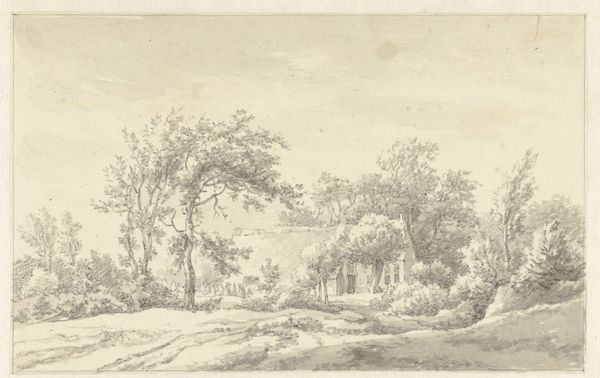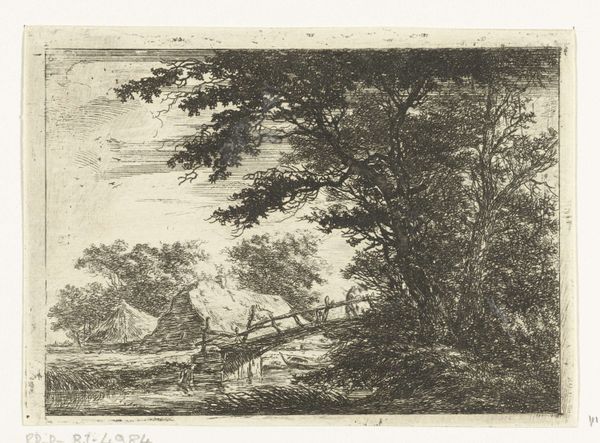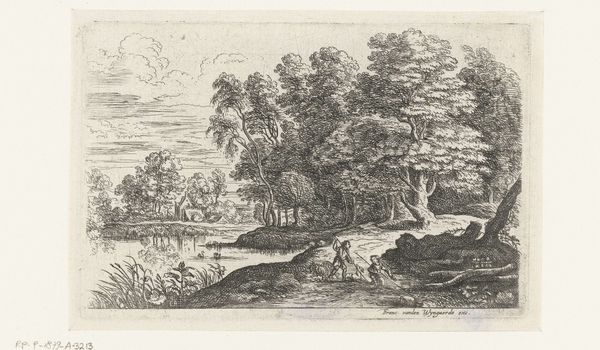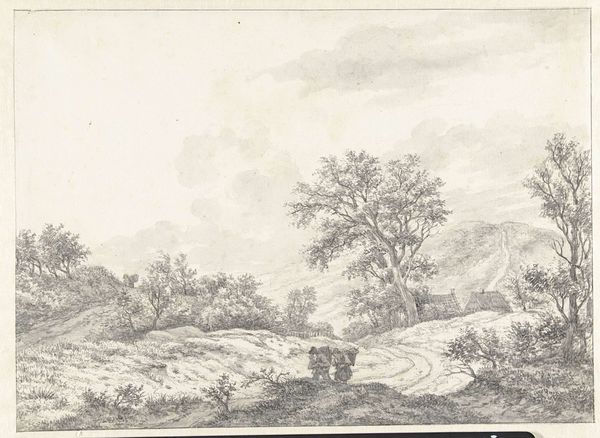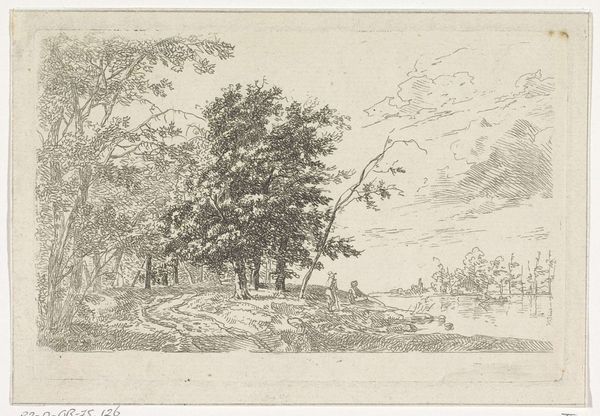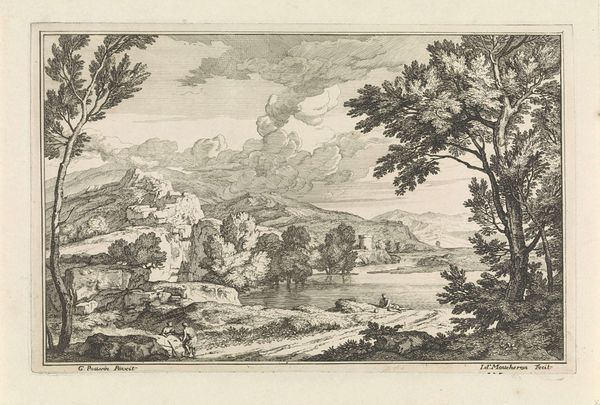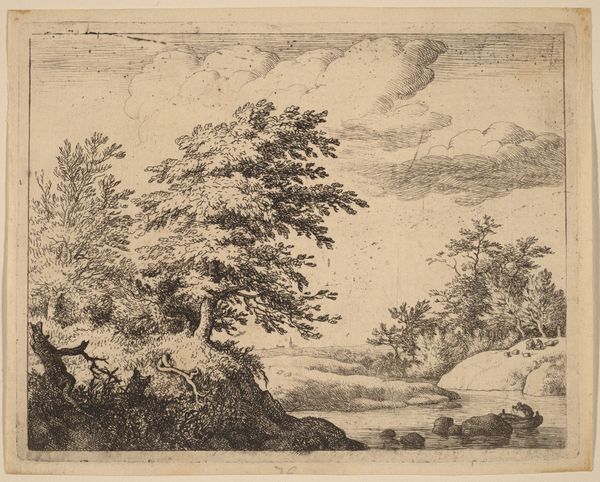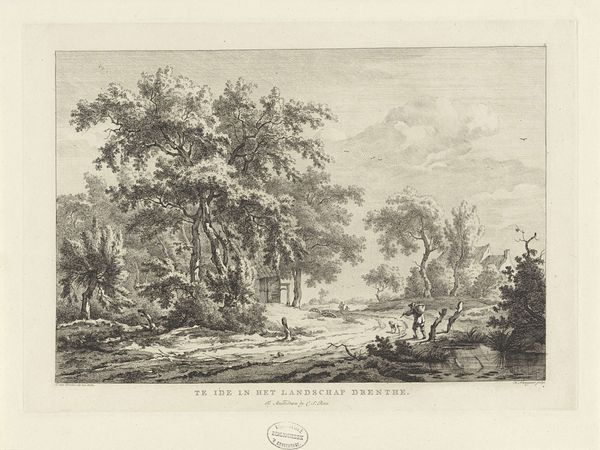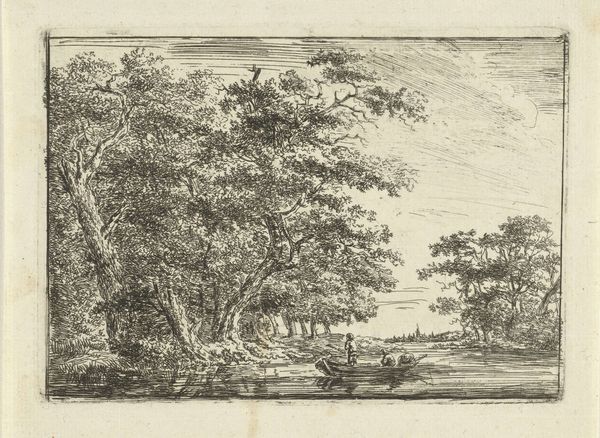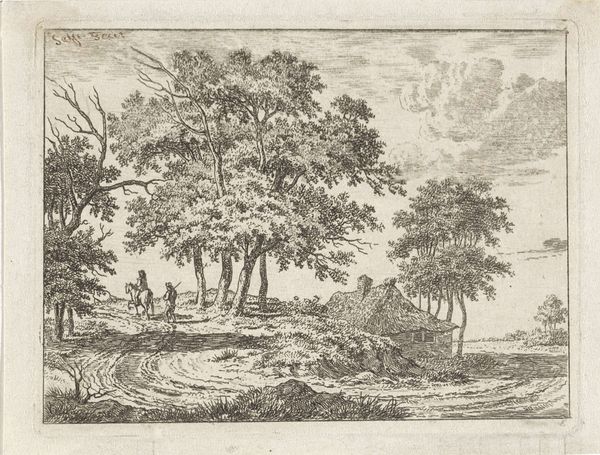
print, etching
#
dutch-golden-age
# print
#
etching
#
landscape
#
etching
Dimensions: height 112 mm, width 156 mm
Copyright: Rijks Museum: Open Domain
Curator: Hermanus van Brussel's "Houten brug bij huizen," an etching dating back to before 1815, depicts a wooden bridge near houses in a tranquil Dutch landscape. Editor: It feels muted and somewhat melancholic, even. The composition guides the eye across the water, under the bridge, to those tiny figures crossing it, but the palette is so restrained it lends a sense of distance. Curator: The restrained palette stems from the etching process itself. The labor-intensive aspect involves the artist using acid to bite into a metal plate, leaving behind the lines that will eventually hold the ink. We must acknowledge the engraver's skilled craft to render tones through lines and marks. Editor: Indeed. Looking at the overall structure, it is a study in contrasts. Note the heaviness of the tree on the right balanced against the open sky on the left. It’s very subtly achieved. And the way light and shadow fall to bring the thatched roofs forward. Curator: These Dutch landscapes were popular at the time, capturing rural life's simple pleasures for a burgeoning merchant class eager to reflect on its values and successes. Notice how the bridge facilitates connection and commerce between communities, echoing Holland’s broader trade ambitions. Editor: You make an excellent point about the socio-economic factors implied within such scenery, however, the appeal also resides in the harmony achieved through basic formal principles – light, form, balance, all rigorously controlled. And note, the etching lends a distinct sense of texture and tangible depth. Curator: Absolutely. The intersection of art and societal production methods becomes so visible through the etcher's line and tonal range achievable through the technique used, doesn’t it? Editor: Yes, indeed, though the true merit may just rest in that delicate play of light, form, and shadow—purely aesthetic experience. But ultimately this brief foray demonstrates how the intrinsic components within any piece always interact with that wider world context you’ve shared.
Comments
No comments
Be the first to comment and join the conversation on the ultimate creative platform.
